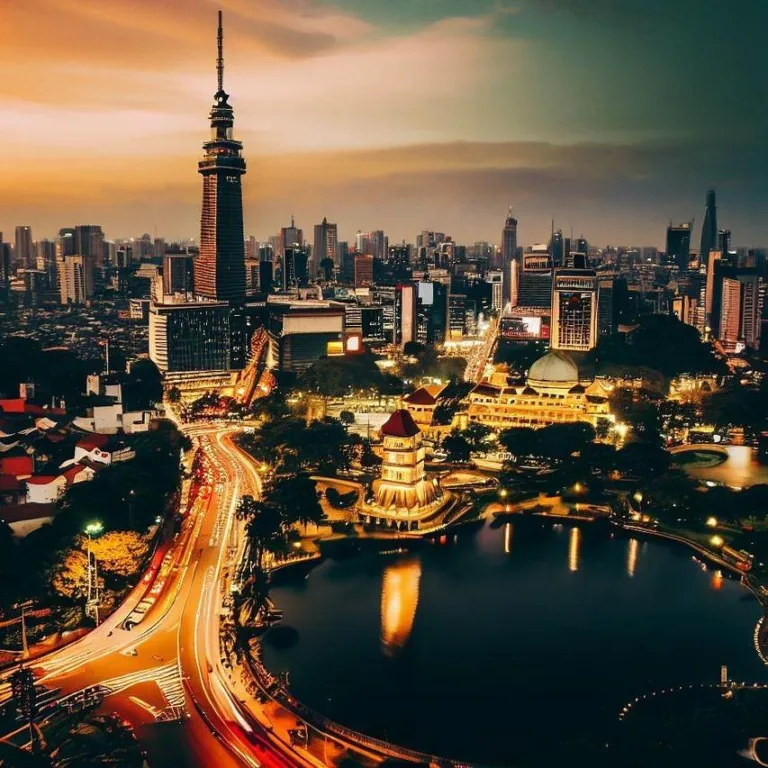Welcome to the bustling metropolis of Jakarta, the vibrant heart of Indonesia! This sprawling city, located on the northwest coast of the island of Java, is not only the capital but also the largest city in Indonesia. With its rich history, diverse culture, and dynamic urban landscape, Jakarta is a captivating destination that offers a unique blend of tradition and modernity.
A glimpse into jakarta’s history
Jakarta’s history is a tapestry woven with the threads of various cultures, colonial influences, and local traditions. Originally known as Jayakarta, the city’s history dates back centuries as a bustling port and trading hub. However, its transformation into the city we see today began during the Dutch colonial period when it was named Batavia. This era left an indelible mark on Jakarta’s architecture and urban planning.
Cultural kaleidoscope
Modern Jakarta is a melting pot of cultures and ethnicities. From Javanese and Sundanese to Chinese and Arabic influences, the city’s diverse population has created a rich cultural tapestry that is reflected in its cuisine, festivals, and architecture. The city is home to numerous museums, galleries, and cultural centers that offer insights into Indonesia’s past and present.
Exploring the Cityscape
Jakarta’s urban landscape is a juxtaposition of towering skyscrapers and historical landmarks. The city is known for its impressive skyline, dominated by architectural marvels such as the National Monument (Monas) and the Istiqlal Mosque. On the other hand, the old town of Kota Tua showcases well-preserved colonial-era buildings that provide a glimpse into Jakarta’s past.
Thriving culinary scene
No visit to Jakarta is complete without indulging in its delectable culinary offerings. The city’s street food scene is legendary, offering an array of flavors that cater to every palate. From the savory delights of nasi goreng (fried rice) and sate (grilled skewers) to the mouthwatering sweetness of klepon (rice cake balls) and martabak (stuffed pancake), Jakarta’s food scene is a feast for the senses.
Shopping and Entertainment
Jakarta is a shopper’s paradise, with options ranging from bustling traditional markets to upscale shopping malls. Whether you’re looking for designer labels or traditional handicrafts, the city has it all. Additionally, Jakarta offers a vibrant nightlife and entertainment scene, with live music venues, theaters, and clubs that come alive after dark.
Frequently Asked Questions (FAQs)
1. What is the best time to visit Jakarta?
The best time to visit Jakarta is during the dry season, which typically spans from May to September. The weather is more pleasant during these months, making it ideal for exploring the city’s attractions.
2. Is Jakarta a safe city for tourists?
While Jakarta is generally safe for tourists, it’s recommended to take common safety precautions. Stay aware of your surroundings, avoid displaying valuables, and use reputable transportation options.
3. How can I get around Jakarta?
Jakarta offers various transportation options, including buses, commuter trains, and ride-sharing services. The TransJakarta bus system is a convenient way to navigate the city, especially during peak hours.
4. What are some must-visit attractions in Jakarta?
Don’t miss the chance to visit iconic landmarks such as the National Monument (Monas), the Jakarta Old Town (Kota Tua), and the Taman Mini Indonesia Indah cultural park. Each offers a unique glimpse into the city’s history and culture.
5. Can I experience traditional Indonesian culture in Jakarta?
Absolutely! Jakarta is a diverse city that celebrates Indonesian culture. Visit cultural centers, attend traditional performances, and explore markets to immerse yourself in the local way of life.
6. What is the local currency, and are credit cards widely accepted?
The local currency is the Indonesian Rupiah (IDR). While credit cards are accepted in many establishments, it’s advisable to carry cash, especially when visiting local markets and smaller shops.
Viz také:






